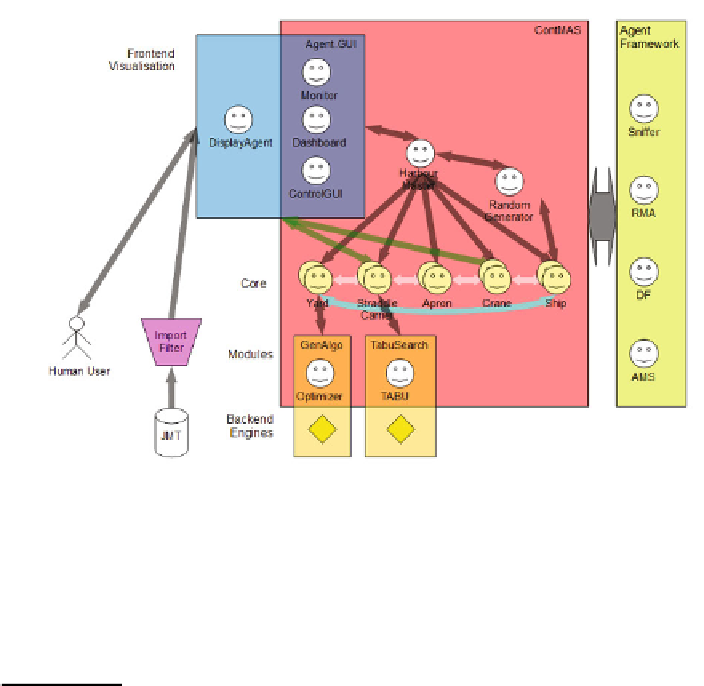Information Technology Reference
In-Depth Information
Preston and Kozan [8] propose a Container Location Model (the plan for container stor-
age in the yard) based on an Evolutionary Algorithm (EA) to optimise outbound trans-
fers for a single ship assuming one of three deterministic types of loading schedule.
4
An Agent-Based Simulator
As basis for the optimization approaches, we present the open source port simulation
model
ContMAS
1
. It consists of several types of agents, which cooperate through (asyn-
chronous) message communication to achieve a common goal, namely the (intelligent)
unloading of containers from a ship to the yard. Although it is configured to do so using
QCs and SCs to fit the situation in the given local port, the model is flexible and can
easily be configured to match any different port setup.
ContMAS
is designed as a tool
for general port simulations. It can be used for planning a new or re-planning a present
port, to test and compare optimization and operation strategies, to simulate utilization
scenarios or to run a just-in-time troubleshooting support tool in an actual port.
Fig. 2.
Simulation Architecture
4.1 Model Description
Architecture:
ContMAS
utilizes the
Java Agent DEvelopment Framework
(
JADE
2
)
maintained by Telecom Italia. It is plain Java and uses
Jena
to access .owl files for
certain features. It can be run as a project in the agent platform management tool
1
LGPL, available at
http://www-stud.uni-due.de/
˜
sehawagn/contmas/
page/index_en.html
2
Not to be confused with the Jade product from Jade Software Corporation.

